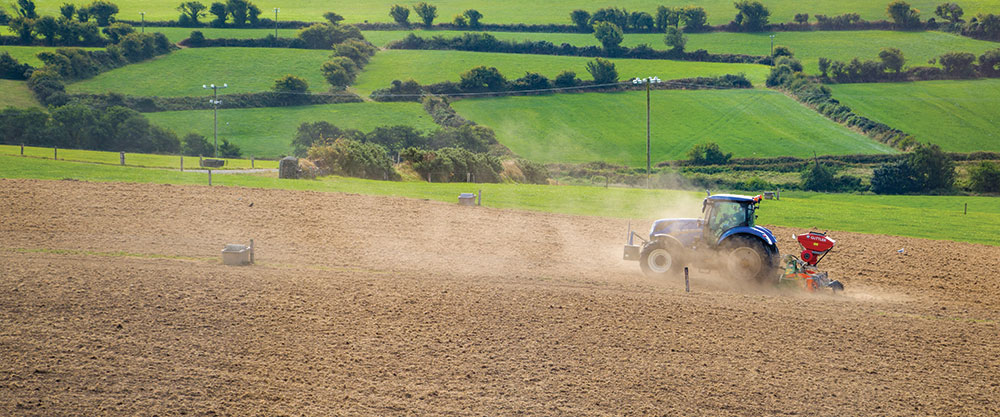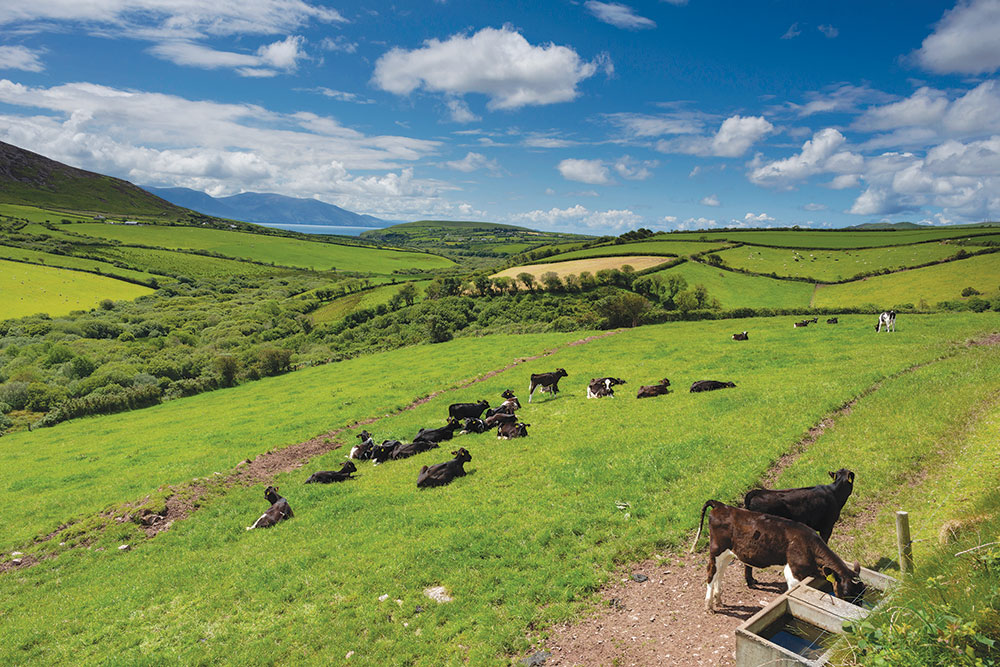01 March 2024
Nit-rate of change
Ireland’s Nitrates Action Programme (NAP) aims to address farming practices relating to issues of declining water quality. Teagasc researchers have examined some of the top measures and their implications.

Fertiliser use calculations are a key measures in Ireland’s 5th Nitrates Action Programme
In 2023, Ireland’s 5th Nitrates Action Programme (NAP) introduced a number of changes to existing farming practices to address trends of declining water quality. Changes include calculations around livestock excretion rates and fertiliser use. Although the measures are obligatory for all farmers, there are various options for farmers, all of which can contribute to achieving the same objective. A panel of 16 experts identified the top three measures in the 5th NAP that would achieve the greatest improvements in water quality. These measures were changes relating to:
- soiled water management and storage,
- livestock excretion rate calculations, and
- chemical nitrogen fertiliser allowances.
Michele McCormack, a Research Officer in Teagasc’s Agricultural Catchments Programme, explains: “To assess farmer preferences, a survey was carried out of dairy farmers participating in the Agricultural Catchments Programme. Farmers were asked to rank in order of preference which options they were willing to implement on their farms in order to remain compliant with the new regulations.”
Soiled water storage management
The new regulation stipulates that “all holdings producing soiled water must have a minimum of three weeks’ soiled water storage capacity in place by the 1st December, 2023 and four weeks’ soiled water storage capacity in place by 1st December, 2024”.
Almost one-third of farmers said that in their own estimation, they had sufficient storage to comply with the new rules. For those farms who needed to carry out additional measures in order to comply, 19% said they would store excess soiled water in an existing slurry tank and 12% said they would be open to investing in building additional storage for soiled water.
The least popular options were to change farming system and reduce cow numbers. In addition to the survey, farmers were also interviewed. Their comments reflect a high level of understanding in relation to the storage of soiled water but they also called for a common sense approach. Comments included:
“I suppose the clamp down on spreading soiled water had to come, it’s a way of clamping down on spreading slurry in the closed period.”
“I think it’s more common sense that needs to be used rather than calendar farming.”

Livestock excretion rates
The new regulation around the calculation of organic nitrogen (N) produced by dairy cows moves from a single calculation of 89kg/N/ha to three different calculations based on milk yields.
Farmers with the highest yielding cows will experience the greatest level of change, moving from 89kg/N/ha to 106kg/N/ha.
Regarding options to reduce livestock excretion rates, the option favoured by 15% of farmers was to increase the land area. At the time the survey was carried out some farmers had not thought about what course of action they would need to remain compliant, and 11% of farmers indicated that they would consider reducing cow numbers. On the qualitative side, some of the remarks in relation to this new policy measure included:
“It’s a disaster because you’re penalising the most efficient cows.”
“It’s a new quota being put on farming. I think we’re just out of the milk quota situation, and we were encouraged by every organisation and everyone to push on, and drive on, and I think we’re being hit badly again.”
Chemical fertiliser
In regards to chemical fertiliser, the changes in the 5th NAP require a national 10% reduction from March 2022 onward, and a further 5% reduction as of 1st January, 2024.
The option most favoured by farmers in relation to this change was to improve soil fertility (15%), followed by improving grassland management (12%) and incorporating clover in grazing swards (11%).
When interviewed, farmers exhibited a strong level of existing knowledge regarding the reduction of the use of chemical fertilisers. This was due, in part, to existing knowledge transfer measures such as discussion groups. However, farmers did highlight a need for more information on newer approaches, such as the introduction of a multispecies sward:
‘‘Before I would go to sow that multispecies sward I’ll be talking to [my farm advisor] for advice … I would always ask them before growing multispecies; they’re good support.”
The changes as part of the 5th NAP present a significant challenge to dairy farmers. An important part of farmer compliance will be the provision of support in the form of financial aid and management advice. Since the collection of this data, additional Targeted Agricultural Modernisation Scheme funding has been announced, alongside a number of national information events being held.
Additional advice tailored to individual farms will be required to support the implementation of measures. Further research will look at how these changes impact milk production nationally.
Contributors
Michele McCormack
Research Officer
Agricultural Catchments Programme, Teagasc Athenry.
michele.mccormack@teagasc.ie
Edel Kelly
Assistant Professor
School of Agriculture
and Food Science, UCD.
Brian Leonard
Assistant Professor
School of Agriculture
and Food Science, UCD.
Diarmuid Mulkerrins
Walsh Scholar
Teagasc/UCD.
[pic credit 1] Mark Heighes/istock.com
[pic credit 2] Oleksii Kononenko/istock.com
